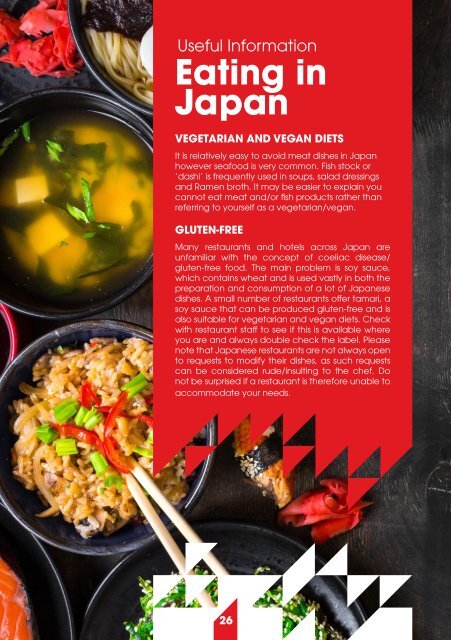Tokyo 2020 Team GB LIVE Pre-Travel Guide
Create successful ePaper yourself
Turn your PDF publications into a flip-book with our unique Google optimized e-Paper software.
Useful Information<br />
Eating in<br />
Japan<br />
VEGETARIAN AND VEGAN DIETS<br />
It is relatively easy to avoid meat dishes in Japan<br />
however seafood is very common. Fish stock or<br />
‘dashi’ is frequently used in soups, salad dressings<br />
and Ramen broth. It may be easier to explain you<br />
cannot eat meat and/or fish products rather than<br />
referring to yourself as a vegetarian/vegan.<br />
GLUTEN-FREE<br />
Many restaurants and hotels across Japan are<br />
unfamiliar with the concept of coeliac disease/<br />
gluten-free food. The main problem is soy sauce,<br />
which contains wheat and is used vastly in both the<br />
preparation and consumption of a lot of Japanese<br />
dishes. A small number of restaurants offer tamari, a<br />
soy sauce that can be produced gluten-free and is<br />
also suitable for vegetarian and vegan diets. Check<br />
with restaurant staff to see if this is available where<br />
you are and always double check the label. Please<br />
note that Japanese restaurants are not always open<br />
to requests to modify their dishes, as such requests<br />
can be considered rude/insulting to the chef. Do<br />
not be surprised if a restaurant is therefore unable to<br />
accommodate your needs.<br />
26




